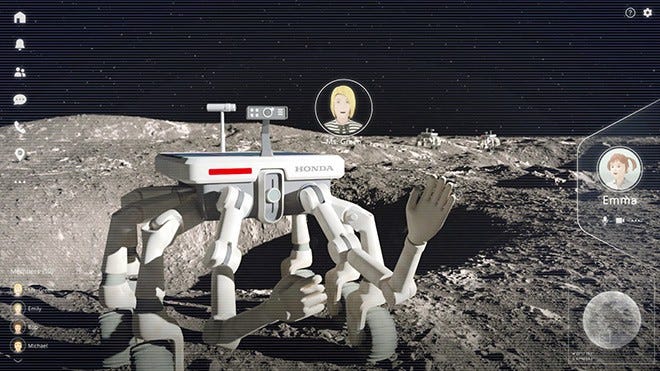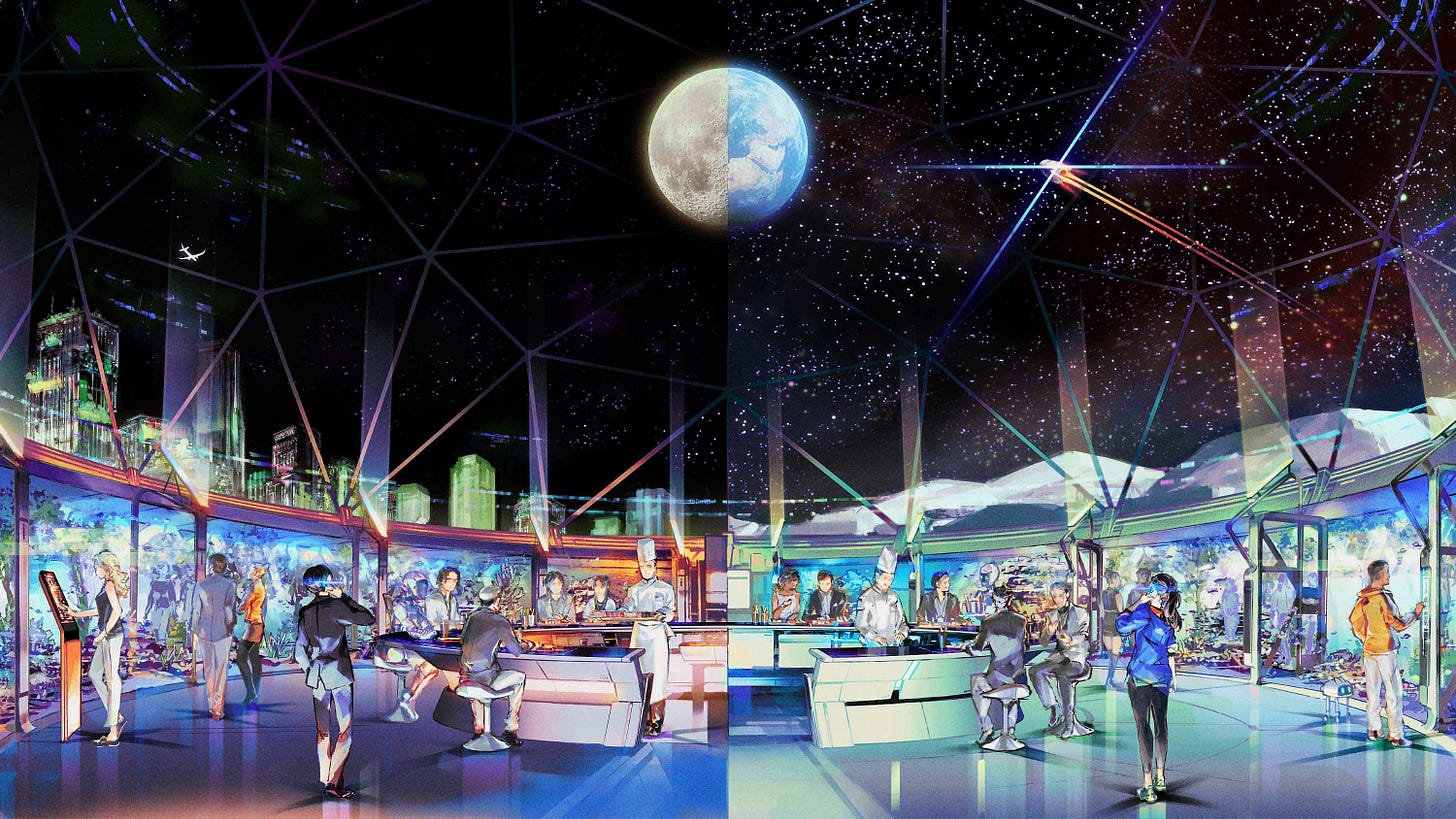Rockets, landers, rovers and... Wienermobiles?
Each month, I try to focus on a specific theme or industry sector, such as telecoms, outdoor apparel, Japan, and so on. For this issue, however, let’s take a world tour and get a glimpse of some of the key stakeholders, projects and organizations who are contributing to the development of the lunar business market.
More and more, governments around the world are gearing up to develop infrastructure on the Moon within the next decade, and studies, research and development are already underway by their respective private sectors and academia.
As always, the following is a round up of news from the previous month. It’s truly astounding how much exciting news there is to cover in only one month, as well as how consistently there are developments and increasing momentum in this arena.
United States
NASA awarded a total of $146 million to five US companies — Blue Origin, Dynetics, Lockheed Martin, Northrop Grumman, and SpaceX — to develop future crewed lunar lander concepts.1
NASA selected a landing site near the Moon’s south pole for its robotic rover VIPER to search for water ice. US lander company Astrobotic plans to deliver the rover there in late 2023.2 NASA also awarded $3.7 million this month to thermal management solutions company Advanced Cooling Technologies to design VIPER’s flight thermal control system.3
NASA awarded researchers at the University of Arizona $500,000 to study lunar mining methods utilizing swarm robotics.4 5 Also this month, a camera developed by ASU was successfully shipped to the Korean Aerospace Research Institute (KARI) and integrated into its Korean Pathfinder Lunar Orbiter (KPLO), which is planned for launch in 2022.6
NASA asked industry for ideas to develop a vehicle to carry lunar astronauts to the launch pad. In a tweet to NASA, the meats and cold cuts company Oscar Mayer offered their famed “Wienermobile” for the job.7
China
China plans to upgrade two of its rockets to be capable of delivering spacecraft to the Moon to accelerate a crewed landing.8 China Aerospace Science and Technology Corp. said the new launcher will be capable of sending 27 tons into lunar transfer orbit and aims to to put a lander with two astronauts on the lunar surface for six hours by around 2030.9
Andrew Jones, your best resource for information on China’s space program, authored an in-depth piece in IEEE Spectrum detailing China’s preparations to develop a Moon base in the 2030’s. It’s worth a read.
Russia
Russia’s space chief said Russia plans to deploy a space station in Earth’s orbit in 5-6 years as a part of the infrastructure for missions to the Moon. The country’s space agency Roscosmos also put out a tender with a value of about $23.4 million for a feasibility study on the country’s first crewed lunar mission and technical specifications for creating a Russian lunar base. Final results should be presented in 2025.10 11
Japan

(Forgot to include this last month!) The Japanese government announced plans to establish a base on the Moon as early as 2030. Research and development is to be carried out by the private-sector with public funding. The government will work with companies possessing expertise in construction, machinery, automation and sensing technologies, aiming to begin initial technological development as early as next year.12
This month, Japan’s agricultural ministry called for applications to outsource the development of an agricultural factory on the Moon. The goal is to develop a sustainable and economical food supply system to provide nutrients to lunar astronauts. The project will run through 2025 with about $2.8 million already allocated for the 2021 fiscal year.13 Space Foodsphere, a space food study group with members including JAXA, Ajinomoto Co., and NTT Data Corp, is aiming to launch a joint study next March.14
Honda Motor Company announced plans to develop avatar robots, which can be operated from Earth to support operations on the Moon. The automaker said it has a robot under development, which is capable of pinching coins and grabbing pull tabs on cans, and plans to have them in operation on the Moon from the 2030’s following technology demonstrations by 2024. Honda is also working with the JAXA to develop a system to produce the water and oxygen on the Moon.15 16 17
International Collaboration
Russian and Chinese space agency representatives hosted talks this month, involving experts from France, Italy, the Netherlands, Germany, Malaysia, Thailand and the UN Office for Outer Space Affairs, to draft a declaration building on the memorandum of understanding between Russia and China to cooperate on building a lunar research station. The document, which will be presented at a space conference to be held in Dubai next month, is expected to detail participation from “all parties concerned.”18
The European Space Agency signed a contract with UK company Surrey Satellite Technology Ltd. (SSTL) to be the main customer on their commercial lunar communications satellite scheduled to launch in 2024.19 Under the contract, SSTL’s satellite will communicate with spacecraft on the lunar surface. The contract is reportedly worth about 20 million euros ($23.5 million) over a minimum of 5 years. The 2024 mission is intended as a demonstration for a future commercial lunar communications network.20
European technology corporation OHB SE, in collaboration with Israeli aerospace manufacturer Israel Aerospace Industries (IAI), aims to offer a lunar delivery service as early as 2025, utilizing a lander capable of carrying 80 to 110 kilograms of payloads. as early as 2025. According to OHB SE, over 100 customers have already expressed their interest.21
A lunar rover prototype developed by the Mohammed bin Rashid Space Centre (MBRSC) in the United Arab Emirates has been completed in France in collaboration with the French space agency CNES. A flight model of the rover is planned to go to the Moon in 2022, making it the Arab world’s first lunar mission.22 MBRSC is already planning to make a second lunar rover that will carry commercial payloads.23
Israeli nonprofit SpaceIL is inviting researchers worldwide to offer experiments to be used in their second lunar mission planned for 2024.24
A group of scientists from Germany’s Max Planck Institute for Solar System Research (MPS), the University of Oxford, and the NASA Ames Research Center produced the highest-resolution images of the craters in the Moon’s south pole, to date, using a machine learning algorithm. In their paper, which was published in Nature, the team acknowledged Google Cloud, the Frontier Development Lab, the SETI Institute, and the Luxembourg Space Agency for “technical, financial, and mentorship support,” and an associated LinkedIn post also acknowledged Intel AI for supporting in some unspecified capacity.25 26 27
Lunar Resources Activity Around the World
Aircraft engine producer Hanwha Aerospace became the first company in South Korea to receive government approval to utilize lunar resources. Hanwa plans to collaborate with six national research bodies on the effort.28
Mexico aims to launch a program to develop an industrial ecosystem for lunar resource utilization in-country. To start, the Mexican Space Agency and Airbus will collaborate on lunar resource extraction technologies.29
Researchers in China are analyzing lunar rocks that the country returned from the Moon to assess whether or not they contain an isotope called Helium-3, which some believe to be a viable fuel for fusion power plants.30
Researchers in Europe successfully demonstrated that water and oxygen can be extracted from lunar soil through a process of heating it.31
India’s Chandrayaan-2 lunar orbiter, which has orbited the Moon 9,000 times in the past two years, has identified signatures of hydroxyl and water-ice, and traces of chromium and manganese on the lunar surface.32 33
British aerospace and defense company Rolls-Royce is studying how a micro-nuclear reactor could be used for mining operations on the Moon.34
Thank you for reading! If you enjoy the newsletter, please subscribe and share!
NASA Selects Five U.S. Companies to Mature Artemis Lander Concepts; NASA, Sept 15 2021.
NASA’s Artemis Rover to Land Near Nobile Region of Moon’s South Pole; NASA, Sept 21 2021.
NASA Awards Advanced Cooling Technologies, Inc. $3.7M Contract for VIPER Mission; Yahoo! Finance, Sept 9 2021.
Gangs of Mining Robots Could Do the Dirty Work for Astronauts on the Moon; Newsweek, Sept 9 2021.
Autonomous Robot Swarms to Mine Lunar Resources; Manufacturing.net, Sept 9 2021.
ASU-developed ShadowCam is incorporated into Korean spacecraft; The State Press, Sept 9 2021.
Oscar Mayer Offers NASA the Wienermobile for Transporting Astronauts; PC Mag, Sept 28 2021.
China may use an existing rocket to speed up plans for a human Moon mission; Ars Technica, Sept 2 2021.
China displays crewed moon landing mission elements; SpaceNews, Sept 30 2021.
Russia to start deploying new orbital station in 5-6 years — Roscosmos chief; TASS, Sept 2 2021.
Russia’s future orbital outpost to embrace seven modules, centrifuge; TASS, Sept 24 2021.
A room with a lunar view: Japan eyes remote construction on the moon; Nikkei Asian Review, Aug 17 2021.
Japan gov't sets sights on moon-base food production initiatives for future missions; The Mainichi, Sept 24 2021.
Japan public-private research group to explore food production on Moon; The Mainichi, Aug 11 2021.
ホンダ、宇宙事業に参入 2020年代にロケットの打ち上げ目指す; The Asahi Shimbun, Sept 30 2021.
Honda to develop rockets and put humans, avatar robots on moon; The Asahi Shimbun, Sept 30 2021.
Honda Sees Its Future in Air Taxis, Rockets and Moon Robots; Bloomberg, Sept 30 2021.
Russia, China to present lunar station declaration at congress in Dubai late Oct; TASS, Sept 27 2021.
Path set for commercial communications around the Moon; ESA, Sept 16 2021.
ESA to be anchor customer on commercial lunar satellite; SpaceNews, Sept 16 2021.
First look: incredible images of the final prototype of the UAE’s Rashid lunar rover; The National, Sept 7 2021.
UAE space chief: space exploration is 'ignition' to boost economy; The National, Sept 2 2021.
SpaceIL accepting proposals for experiments for Beresheet 2 moon mission; Jerusalem Post, Sept 2 2021.
Scientists Produce High-resolution Images Of 17 Craters On Moon's South Pole; Republicworld.com, Sept 27 2021.
Peering Into the Moon’s Shadows: AI Provides Sharper Images of Lunar Craters That Contain Water Ice; SciTechDaily, Sept 30 2021.
South Korea greenlights Hanwha to utilize lunar resources; The Korea Herald, Sept 9 2021.
Airbus Defence and Space, the Mexican Space Agency and Mexican start-up Dereum Labs to collaborate on lunar resources extraction technologies; Airbus SE Press Release, Sept 24 2021.
CHINA ANALYZING MOON ROCKS AS POTENTIAL FUSION POWER SOURCE; Futurism, Sept 18 2021.
Life support cooked up from lunar rocks; Phys.org, Sept 23 2021.
Chandrayaan-2 orbiter completes 9,000 orbits around Moon in 2 yrs, gives vital data: Isro chief; The Times of India, Sept 6 2021.
Chandrayaan-2 orbiter payloads made discovery-class findings, says ISRO; The Hindu, Sept 10 2021.








